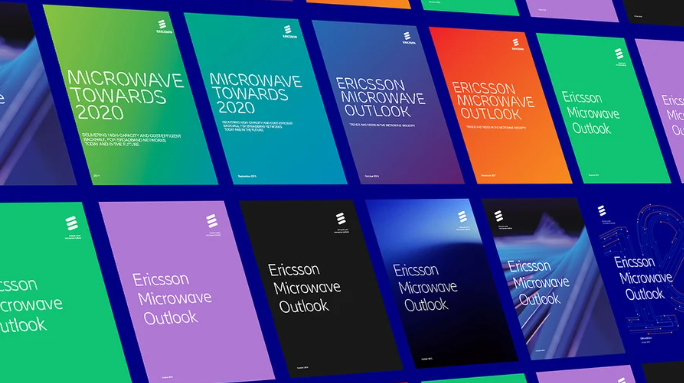Ericsson has recently released the 10th edition of the “2023 Microwave Technology Outlook Report”. The report emphasizes that E-band can meet the return capacity requirements of most 5G sites after 2030. In addition, the report also delves into the latest antenna design innovations, as well as how AI and automation can reduce the operational costs of transmission networks.
The report indicates that the E-band spectrum (71GHz to 86GHz) can meet the return capacity requirements of most 5G stations by 2030 and beyond. This frequency band has been opened and deployed in countries that cover 90% of the global population. This prediction has been supported by simulated backhaul networks of three European cities with different E-band connection densities.
The report shows that the proportion of deployed microwave solutions and fiber optic connected sites is gradually increasing, reaching 50/50 by 2030. In areas where fiber optic is not available, microwave solutions will become the main connection solution; In rural areas where it is difficult to invest in laying fiber optic cables, microwave solutions will become the preferred solution.
It is worth mentioning that “innovation” is the core focus of the report. The report discusses in detail how new antenna designs can more effectively utilize the required spectrum, reduce spectrum costs, and improve performance in high-density networks. For example, a sway compensation antenna with a length of 0.9 meters is 80% longer than a regular antenna with a jump distance of 0.3 meters. In addition, the report also highlights the innovative value of multi band technology and other antennas such as waterproof radomes.
Among them, the report takes Greenland as an example to illustrate how long-distance transmission solutions become the best choice, providing residents in remote areas with high-speed mobile communication that is indispensable for modern life. A local operator has been using microwave networks for a long time to meet the connection needs of residential areas on the west coast, with a length of 2134 kilometers (equivalent to the flight distance between Brussels and Athens). Currently, they are upgrading and expanding this network to meet the higher capacity requirements of 5G.
Another case in the report introduces how to significantly reduce the operational costs of managing microwave networks through AI based network automation. Its advantages include shortening troubleshooting time, reducing over 40% of on-site visits, and optimizing overall prediction and planning.
Mikael hberg, Acting Director of Microwave System Products for Ericsson’s Network Business, said: “To accurately predict the future, it is necessary to have a deep understanding of the past and combine market and technological insights, which is the core value of the Microwave Technology Outlook Report. With the release of the 10th edition of the report, we are pleased to see that in the past decade, Ericsson has released the Microwave Technology Outlook Report It has become the main source of insights and trends in the wireless backhaul industry
Microwave Technology Outlook “is a technical report focusing on microwave return networks, in which articles delve into existing and emerging trends and current development status in different fields. For operators considering or already using microwave backhaul technology in their networks, these articles may be enlightening.
*Antenna diameter is 0.9 meters
Post time: Oct-28-2023
